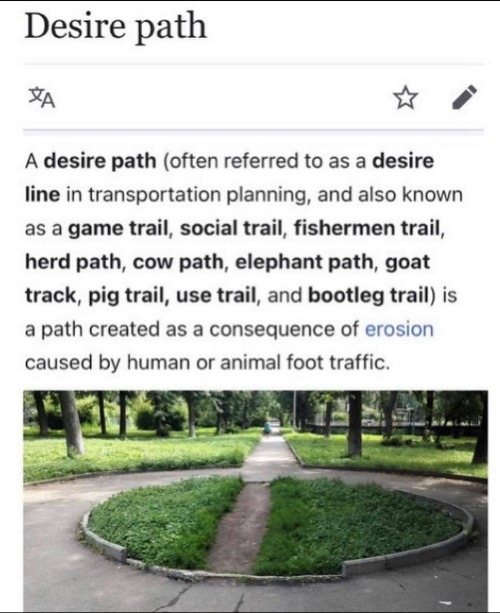Oooh, I Tried This Method In First Year Physics Too! It Was Very Effective, Since I Got Fine Details
Oooh, I tried this method in first year physics too! It was very effective, since I got fine details from the pre-reading, which was supplemented during the lecture! This method worked fantastic (as long as I kept a routine)! Good luck with it!

aug 25, 2021
✨2/30 days of productivity✨
started taking notes on QM today. i think i figured out how i want to take notes this year (at least in this course); reading and taking a bit of notes pre lecture and then i made a column of space for adding things during the lecture so i don’t have to write everything down during the lecture, only the things i missed in my notes! this way i can focus more on listening and understanding during the lecture, i damn hope it works lol
More Posts from Purpletelescope and Others

I believe in free education, one that’s available to everyone; no matter their race, gender, age, wealth, etc… This masterpost was created for every knowledge hungry individual out there. I hope it will serve you well. Enjoy!
FREE ONLINE COURSES (here are listed websites that provide huge variety of courses)
Alison
Coursera
FutureLearn
open2study
Khan Academy
edX
P2P U
Academic Earth
iversity
Stanford Online
MIT Open Courseware
Open Yale Courses
BBC Learning
OpenLearn
Carnegie Mellon University OLI
University of Reddit
Saylor
IDEAS, INSPIRATION & NEWS (websites which deliver educational content meant to entertain you and stimulate your brain)
TED
FORA
Big Think
99u
BBC Future
Seriously Amazing
How Stuff Works
Discovery News
National Geographic
Science News
Popular Science
IFLScience
YouTube Edu
NewScientist
DIY & HOW-TO’S (Don’t know how to do that? Want to learn how to do it yourself? Here are some great websites.)
wikiHow
Wonder How To
instructables
eHow
Howcast
MAKE
Do it yourself
FREE TEXTBOOKS & E-BOOKS
OpenStax CNX
Open Textbooks
Bookboon
Textbook Revolution
E-books Directory
FullBooks
Books Should Be Free
Classic Reader
Read Print
Project Gutenberg
AudioBooks For Free
LibriVox
Poem Hunter
Bartleby
MIT Classics
Many Books
Open Textbooks BCcampus
Open Textbook Library
WikiBooks
SCIENTIFIC ARTICLES & JOURNALS
Directory of Open Access Journals
Scitable
PLOS
Wiley Open Access
Springer Open
Oxford Open
Elsevier Open Access
ArXiv
Open Access Library
LEARN:
1. LANGUAGES
Duolingo
BBC Languages
Learn A Language
101languages
Memrise
Livemocha
Foreign Services Institute
My Languages
Surface Languages
Lingualia
OmniGlot
OpenCulture’s Language links
2. COMPUTER SCIENCE & PROGRAMMING
Codecademy
Programmr
GA Dash
CodeHS
w3schools
Code Avengers
Codelearn
The Code Player
Code School
Code.org
Programming Motherf*?$%#
Bento
Bucky’s room
WiBit
Learn Code the Hard Way
Mozilla Developer Network
Microsoft Virtual Academy
3. YOGA & MEDITATION
Learning Yoga
Learn Meditation
Yome
Free Meditation
Online Meditation
Do Yoga With Me
Yoga Learning Center
4. PHOTOGRAPHY & FILMMAKING
Exposure Guide
The Bastards Book of Photography
Cambridge in Color
Best Photo Lessons
Photography Course
Production Now
nyvs
Learn About Film
Film School Online
5. DRAWING & PAINTING
Enliighten
Ctrl+Paint
ArtGraphica
Google Cultural Institute
Drawspace
DragoArt
WetCanvas
6. INSTRUMENTS & MUSIC THEORY
Music Theory
Teoria
Music Theory Videos
Furmanczyk Academy of Music
Dave Conservatoire
Petrucci Music Library
Justin Guitar
Guitar Lessons
Piano Lessons
Zebra Keys
Play Bass Now
7. OTHER UNCATEGORIZED SKILLS
Investopedia
The Chess Website
Chesscademy
Chess.com
Spreeder
ReadSpeeder
First Aid for Free
First Aid Web
NHS Choices
Wolfram Demonstrations Project
Please feel free to add more learning focused websites.
*There are a lot more learning websites out there, but I picked the ones that are, as far as I’m aware, completely free and in my opinion the best/ most useful.
SCHOOL CHEAT SHEET!!
soothe yourself | self care
stationery
printables
helpful sites
music for studying | more music
note taking methods | another one
studying methods
english | physics | chemistry | biology | maths | languages
how to learn a language
ultimate guide for writing | writing resources | writing helps | tips for writers
how to write a kickass essay | write a great essay | stuff you need to write essays | essay tips | essay checklist | grade your essay
how do I study for…
bullet journals | a guide to bullet journals
the testing effect
everything you need to succeed in school
time management
organisation
how to annotate | another one
guide to aesthetically pleasing notes | improve your handwriting
create a study guide
resources | helpful websites | there’s an app for that
get more out of google
productivity resources | 14 apps to become productive | how to stay productive
lazy night owl school survival guide
apps for a better life | useful websites for students
masterpost of studying tips
social media citation guide
college masterpost | another one | starting college on the right foot | packing for college | how to survive in college
how to ace that college interview
food to stay motivated | motivation guide
how to stay awake in class
balancing a healthy lifestyle
studying on your period
huge masterpost for the semester
a very long list to help you survive school
not enough time to finish an assignment?
100 delicious cheap recipes
53 posts for students
high school cheat sheet
other cheat sheets


100 days of productivity | 62/100
First day of spring semester!
I can’t believe past me thought 4 classes in one day would be ok I’m so tired
Propagation of Error
When I first started in physics, I was utterly clueless about propagating error. After three years of college, I have a better grasp of it and feel more comfortable using it in the lab. Have a look if you’re having trouble with error propagation!
Error and Uncertainty
Error: an unknown quantity in the realm of the state of nature
Uncertainty: a parameter in the realm of our state of knowledge about nature
Type A uncertainty: statistical in nature (an example of this would be if you were launching an object 15 times and recorded each distance)
Type B uncertainty: not statistical in nature (an example of this would be a digital reading on a scale - no matter how many times you put the same object on the scale, you will get the same reading)
Random vs Systematic Error
Random Error
environmental fluctuations
equipment noise
natural processes
Systematic Error
environment: fixed beyond a relevant parameter
measurement technique: assumptions, experimenter bias
equipment with an offset or using equipment beyond its limits
uninformed choices
You can reduce random error by taking more measurements.
You can reduce systematic error through thoroughness, properly calibrating equipment, reading manuals, and ensuring reproducibility.
Basic Error Propagation
This is the standard equation for error propagation:

This represents the uncertainty in the measurement of some value x. Suppose you are measuring this value based on this equation:

You took three measurements, a, b, and c, and plugged them into this equation to get x. However, there is some uncertainty associated with each of these three values. Let’s say you measured a on a scale, b on an oscilloscope, and c with a ruler. There is uncertainty associated with all of those measurements. When you’re reading the scale, you read it as 15.45g. Let’s assume there is an uncertainty of 0.01g in that reading. Similarly, you read your oscilloscope to be 3V, and there is an uncertainty of 0.05V. You read your ruler to be 3.45cm, and there is an uncertainty of 0.05cm. We now have our uncertainties for the three values:
a = 15.45g +/- 0.01g
b = 3V +/- 0.05V
c = 3.45cm +/- 0.05cm
The other aspect of the uncertainty equation is taking the partial derivative. Those are the dx/da and dx/db parts of the equation. We will take the partial with respect of each term.
The partial derivative of the equation for x with respect to a is 2a2
The partial derivative of the equation for x with respect to b is 2
The partial derivative of the equation for x with respect to c is 4.5
Now, we can plug into our equation:




Your uncertainty in your measurement for x is +/- 22.86.
I hoped this helped you if you’re struggling with uncertainty!
Romanticize your education
the midday stillness of a library
coursework sprawled on top of a desk
notes on the margins of a textbook
tracing names carved into an armchair
the inherent eroticism of the library after dark
a note falling out of a battered book
reminders scrawled across your hands
cursive handwriting
whispers cutting through the silence of the dormitory
the cold glow of a laptop screen in a dark room
ink stains
notebooks with half the pages crossed out
passing notes during lecture
getting up at 3 am to google something
leatherbound books with gold lining
crisp white paper
the smell of new books
Listen to your elders
So last week I posted abut the importance of downloading your fic. And then three days later AO3 went down for 24 hours. No one was more weirded out by this than I was. But while y’all were acting like the library at Alexandria was on fire I was reading my download fic and editing chapter eight of Buck, Rogers, and the 21st Century. And also thinking about what I could do to be helpful when the crisis was actually over.
So first off, I’m going to repeat that if you’re going to bookmark a fic, you really need to also download the fic and back it up in a safe place. I just do it automatically now and it’s a good habit to get into.
But let’s talk about some other scenarios. Last October I lost power for over a week after hurricane Ian. Apart from not having internet or A/C I did find plenty to do, I collect books so I had plenty to read, but maybe, unlike me, your favorite comfort reads aren’t sitting on a bookshelf. So let’s do something about that, shall we?
In olden times many long years ago around 1995 we printed off a lot of fic. It was mostly SOP to print a fic you planned to reread and stick it in a three ring binder. And that’s totally valid today too, but you can also make a very nice paperback with a minimum amount of skill and materials.
Let’s start with the download; Go to Ao3 and select your fic, we’ll be working with one of mine. This method works best with one shots, long fic tends to need a more complicated approach. Get yourself an HTML download

Open up the HTML download and select all then copy paste into any word processor. Set the page to landscape and two columns, then change the font to something you find easy to read, this is your book, no judgement. This is all you have to do for layout but I like to play a little bit. I move all the meta, summary, notes to the end and pick out a fun font for the title:

No time like the present to do a quick proofread. Congratulations, you’ve just created your first typeset. On to the fun part.
Now you’re going to need some materials: 8.5x11in paper ruler one sheet of 12x12 medium card stock (60-80lb) scissors pencil pen or fine tip marker sheet of wax paper white glue two binder clips 2 heavy books or 1 brick butter knife
You’ll also need a printer, if you’re in the US there is almost a 100% chance your local library has a printer you can use if you don’t have your own. None of these materials are expensive and you can literally use cheap copy paper and Elmers glue.
Print your text block, one page per side. Fold the first page in half so that the blank side is inside and the printed side out:

use the butter knife to crease the edge. Repeat on all the sheets. When you’ve finished, stack them up with the raw edge on the left and the folded edge on the right. I used standard copy paper, because you’re only printing on one side there’s no bleed to worry about. Take the text block and line everything up. Use the binder clips to hold the raw edge in place.
Wrap the text block in the wax paper so that the raw edge and binder clips are facing out. I’m going to use my home built book press but you don’t need one, a brick or a couple of books or anything else heavy will work fine.

Once the text block is anchored down, take off he binder clips and get out the glue.

You can use a brush but you don’t need one, smear some glue on that raw edge.
Go make a margarita, watch The Mandalorian, call your mother. Don’t come back for at least an hour
In an hour smear some more glue on there and shift your brick forward so that the whole book is covered. This keeps the paper from warping. While glue part 2 is drying we’ll do the cover. Get out your 12x12 cardstock

Mark the cardstock off at 8.5 inches and cut it. Measure in 5.5 inches from the left and put in a score line with the butter knife (the back edge not the sharp edge)
Carefully fold the score line, this is your front cover. You have some options for the cover title, you can use a cutting machine like a cricut if you have one, you can print out a title on the computer and use carbon paper to transfer the text to the cardstock. I was in a mood so I just freehanded that beoch. Pencil first then in pen.
Take your text block out from under your brick. Line it up against the score mark and mark the second score on the other side of the spine

Fold the score and glue the textblock into the cover at the spine. Once the glue dries up mark the back cover with the pencil and then trim the back cover to fit with your scissors.
Voila:


I’m going to put this baby on the shelf next to the Silmarillion.
The whole process, not counting drying time, took less than an hour.
If you want to make a book of a longer fic, I recommend Renegade Publishing, they have a ton of resources for fan-binders.
this is an astronomer's paradise <3


Star trails over La Silla
Credit: ESO/B. Tafreshi/ C.Madsen
-
 jeorellag liked this · 10 months ago
jeorellag liked this · 10 months ago -
 thesnobwiththeglasses liked this · 2 years ago
thesnobwiththeglasses liked this · 2 years ago -
 haneeen2004 liked this · 2 years ago
haneeen2004 liked this · 2 years ago -
 a-venturando liked this · 2 years ago
a-venturando liked this · 2 years ago -
 cyhers liked this · 2 years ago
cyhers liked this · 2 years ago -
 saaaakshi liked this · 3 years ago
saaaakshi liked this · 3 years ago -
 mosstoucher liked this · 3 years ago
mosstoucher liked this · 3 years ago -
 pockykento liked this · 3 years ago
pockykento liked this · 3 years ago -
 nerdygoals liked this · 3 years ago
nerdygoals liked this · 3 years ago -
 scholasticsbookfair reblogged this · 3 years ago
scholasticsbookfair reblogged this · 3 years ago -
 links-studies reblogged this · 3 years ago
links-studies reblogged this · 3 years ago -
 chicanastudies reblogged this · 3 years ago
chicanastudies reblogged this · 3 years ago -
 littlebitarue liked this · 3 years ago
littlebitarue liked this · 3 years ago -
 blood-of-a-ghost liked this · 3 years ago
blood-of-a-ghost liked this · 3 years ago -
 justanotherstudyblrinthecrowd reblogged this · 3 years ago
justanotherstudyblrinthecrowd reblogged this · 3 years ago -
 astarcalledeye liked this · 3 years ago
astarcalledeye liked this · 3 years ago -
 mathilda-studies reblogged this · 3 years ago
mathilda-studies reblogged this · 3 years ago -
 harumivetstudies liked this · 3 years ago
harumivetstudies liked this · 3 years ago -
 chicanastudies reblogged this · 3 years ago
chicanastudies reblogged this · 3 years ago -
 captaincardboardbox liked this · 3 years ago
captaincardboardbox liked this · 3 years ago -
 problematicprocrastinator reblogged this · 3 years ago
problematicprocrastinator reblogged this · 3 years ago -
 fatimaths17 liked this · 3 years ago
fatimaths17 liked this · 3 years ago -
 elle-iilaaha liked this · 3 years ago
elle-iilaaha liked this · 3 years ago -
 irvistudies reblogged this · 3 years ago
irvistudies reblogged this · 3 years ago -
 physicstudies liked this · 3 years ago
physicstudies liked this · 3 years ago -
 cbmoralesthoughts liked this · 3 years ago
cbmoralesthoughts liked this · 3 years ago -
 journeytomd reblogged this · 3 years ago
journeytomd reblogged this · 3 years ago


